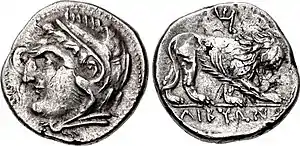Portal maintenance status: (June 2018)
|
The Spain Portal (Bienvenido al portal español)
Spain (Spanish: España, [esˈpaɲa] ⓘ), or the Kingdom of Spain (Reino de España), is a country located in Southwestern Europe, with parts of its territory in the Atlantic Ocean, the Mediterranean Sea and Africa. It is the largest country in Southern Europe and the fourth-most populous European Union member state. Spanning across the majority of the Iberian Peninsula, its territory also includes the Canary Islands in the Atlantic Ocean, the Balearic Islands in the Mediterranean Sea, and the autonomous cities of Ceuta and Melilla in Africa. Spain is bordered to the north by France, Andorra, and the Bay of Biscay; to the east by the Mediterranean Sea; to the south by Morocco in Ceuta and Melilla, and the United Kingdom in Gibraltar; and to the west by Portugal and the Atlantic Ocean. Spain's capital and largest city is Madrid; other major urban areas include Barcelona, Valencia, Zaragoza, Seville, Málaga, Murcia, Palma de Mallorca, Las Palmas de Gran Canaria, and Bilbao.
In early antiquity, the Iberian Peninsula was inhabited by a mixture of Iberian and Celtic tribes, along with other local pre-Roman peoples. With the Roman conquest of the Iberian Peninsula, the province of Hispania was established. Following the Romanization and Christianization of Hispania, the fall of the Western Roman Empire ushered in the inward migration of tribes from Central Europe, including the Visigoths, who formed the Visigothic Kingdom centred on Toledo. In the early eighth century, most of the peninsula was conquered by the Umayyad Caliphate, and during early Islamic rule, Al-Andalus became a dominant peninsular power centred in Córdoba. Several Christian kingdoms emerged in Northern Iberia, chief among them Asturias, León, Castile, Aragon, Navarre, and Portugal; made an intermittent southward military expansion, known as the Reconquista, repelling Islamic rule in Iberia, which culminated with the Christian seizure of the Nasrid Kingdom of Granada in 1492. The dynastic union of the Crown of Castile and the Crown of Aragon in 1479 is often considered the formation of Spain as a country. (Full article...)
 Featured article –
Featured article –
 Image 1
Image 1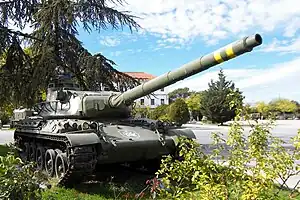 An AMX-30E on display at the Museum of Armored Vehicles of El Goloso, in Spain
An AMX-30E on display at the Museum of Armored Vehicles of El Goloso, in Spain
The AMX-30E (E stands for España, Spanish for Spain) is a Spanish main battle tank based on France's AMX-30. Although originally the Spanish government sought to procure the German Leopard 1, the AMX-30 was ultimately awarded the contract due to its lower price and the ability to manufacture it in Spain. 280 units were manufactured by Santa Bárbara Sistemas for the Spanish Army, between 1974 and 1983. (Full article...) Image 2
Image 2 Spanish Leopard 2E in Zaragoza, June 2008
Spanish Leopard 2E in Zaragoza, June 2008
The Leopardo 2E or Leopard 2A6E (E stands for España (Spanish for 'Spain')) is a variant of the German Leopard 2 main battle tank (specifically the Leopard 2A6 variant), tailored to the requirements of the Spanish army, which acquired it as part of an armament modernization program named Programa Coraza, or Program Cuirass. The acquisition program for the Leopard 2E began in 1994, five years after the cancellation of the Lince tank program that culminated in an agreement to transfer 108 Leopard 2A4s to the Spanish army in 1998 and started the local production of the Leopard 2E in December 2002. Despite postponement of production owing to the 2003 merger between Santa Bárbara Sistemas and General Dynamics, and continued manufacturing issues between 2006 and 2007, 219 Leopard 2Es have been delivered to the Spanish army. (Full article...) Image 3
Image 3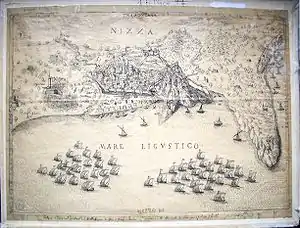 The siege of Nice by a Franco-Ottoman fleet in 1543 (drawing by Toselli, after an engraving by Aeneas Vico)
The siege of Nice by a Franco-Ottoman fleet in 1543 (drawing by Toselli, after an engraving by Aeneas Vico)
The Italian War of 1542–1546 was a conflict late in the Italian Wars, pitting Francis I of France and Suleiman I of the Ottoman Empire against the Holy Roman Emperor Charles V and Henry VIII of England. The course of the war saw extensive fighting in Italy, France, and the Low Countries, as well as attempted invasions of Spain and England. The conflict was inconclusive and ruinously expensive for the major participants. (Full article...)![Image 4The Lince (Spanish pronunciation: [ˈlinθe], meaning "Lynx") was a Spanish development programme for a proposed main battle tank that unfolded during the late 1980s and early 1990s. The intention was to replace the M47 and M48 Patton tanks that the Spanish Army had received under the U.S. Mutual Defense Assistance Act between 1954 and 1975, and to complement the AMX-30E tanks manufactured for the army during the 1970s. Companies from several nations, such as German Krauss-Maffei, Spanish Santa Bárbara, and French GIAT, made bids for the development contract. The main priorities were mobility and firepower, with secondary priority placed on protection; the Lince tank was to have been lighter and faster than its competitors. To achieve a sufficient level of firepower and protection, the Lince was to use Rheinmetall's 120 mm L/44 tank-gun and German composite armour from the Leopard 2A4. (Full article...)](../I/Blank.png.webp) Image 4The Lince (Spanish pronunciation: [ˈlinθe], meaning "Lynx") was a Spanish development programme for a proposed main battle tank that unfolded during the late 1980s and early 1990s. The intention was to replace the M47 and M48 Patton tanks that the Spanish Army had received under the U.S. Mutual Defense Assistance Act between 1954 and 1975, and to complement the AMX-30E tanks manufactured for the army during the 1970s. Companies from several nations, such as German Krauss-Maffei, Spanish Santa Bárbara, and French GIAT, made bids for the development contract. The main priorities were mobility and firepower, with secondary priority placed on protection; the Lince tank was to have been lighter and faster than its competitors. To achieve a sufficient level of firepower and protection, the Lince was to use Rheinmetall's 120 mm L/44 tank-gun and German composite armour from the Leopard 2A4. (Full article...)
Image 4The Lince (Spanish pronunciation: [ˈlinθe], meaning "Lynx") was a Spanish development programme for a proposed main battle tank that unfolded during the late 1980s and early 1990s. The intention was to replace the M47 and M48 Patton tanks that the Spanish Army had received under the U.S. Mutual Defense Assistance Act between 1954 and 1975, and to complement the AMX-30E tanks manufactured for the army during the 1970s. Companies from several nations, such as German Krauss-Maffei, Spanish Santa Bárbara, and French GIAT, made bids for the development contract. The main priorities were mobility and firepower, with secondary priority placed on protection; the Lince tank was to have been lighter and faster than its competitors. To achieve a sufficient level of firepower and protection, the Lince was to use Rheinmetall's 120 mm L/44 tank-gun and German composite armour from the Leopard 2A4. (Full article...) Image 5The Nyon Conference was a diplomatic conference held in Nyon, Switzerland, in September 1937 to address attacks on international shipping in the Mediterranean Sea during the Spanish Civil War. The conference was convened in part because Italy had been carrying out unrestricted submarine warfare, although the final conference agreement did not accuse Italy directly; instead, the attacks were referred to as "piracy" by an unidentified body. Italy was not officially at war, nor did any submarine identify itself. The conference was designed to strengthen non-intervention in the Spanish Civil War. The United Kingdom and France led the conference, which was also attended by Bulgaria, Egypt, Greece, Romania, Turkey, the Soviet Union and Yugoslavia. (Full article...)
Image 5The Nyon Conference was a diplomatic conference held in Nyon, Switzerland, in September 1937 to address attacks on international shipping in the Mediterranean Sea during the Spanish Civil War. The conference was convened in part because Italy had been carrying out unrestricted submarine warfare, although the final conference agreement did not accuse Italy directly; instead, the attacks were referred to as "piracy" by an unidentified body. Italy was not officially at war, nor did any submarine identify itself. The conference was designed to strengthen non-intervention in the Spanish Civil War. The United Kingdom and France led the conference, which was also attended by Bulgaria, Egypt, Greece, Romania, Turkey, the Soviet Union and Yugoslavia. (Full article...) Image 6
Image 6.png.webp) Lombardy in 1522. The location of the battle is marked.
Lombardy in 1522. The location of the battle is marked.
The Battle of Bicocca or La Bicocca (Italian: Battaglia della Bicocca) was fought on 27 April 1522, during the Italian War of 1521–26. A combined French and Venetian force under Odet de Foix, Vicomte de Lautrec, was decisively defeated by an Imperial–Spanish and Papal army under the overall command of Prospero Colonna. Lautrec then withdrew from Lombardy, leaving the Duchy of Milan in Imperial hands. (Full article...) Image 7
Image 7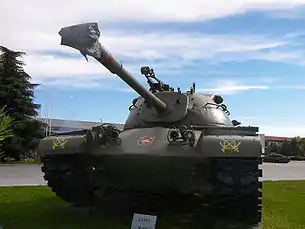 An M48 Patton tank of the Spanish Army on display at the El Goloso Museum of Armored Vehicles in October 2007.
An M48 Patton tank of the Spanish Army on display at the El Goloso Museum of Armored Vehicles in October 2007.
Tanks in the Spanish Army have over 90 years of history, from the French Renault FTs first delivered in 1919 to the Leopard 2 and B1 Centauro models of the early 21st century. The Spanish FTs took part in combat during the Rif War and participated in the first amphibious landing with tanks in history, at Alhucemas. In 1925, the Spanish Army began to undertake a program to develop and produce a Spanish tank, an upgraded version of the Renault FT, called the Trubia A4. Although the prototype performed well during testing, the tank was never put into mass production. Spain also experimented with the Italian Fiat 3000, acquiring one tank in 1925, and with another indigenous tank program called the Landesa. However, none of these evolved into a major armor program, and as a result the FT remained the most important tank, in numbers, in the Spanish Army until the beginning of the Spanish Civil War. (Full article...) Image 8The Oran fatwa was a responsum fatwa, or an Islamic legal opinion, issued in 1502 to address the crisis that occurred when Muslims in the Crown of Castile (in Spain) were forced to convert to Christianity in 1500–1502. The fatwa sets out detailed relaxations of the sharia (Islamic law) requirements, allowing the Muslims to conform outwardly to Christianity and perform acts that are ordinarily forbidden in Islamic law, when necessary to survive. It includes relaxed instructions for fulfilling the ritual prayers, the ritual charity, and the ritual ablution, and recommendations when obliged to violate Islamic law, such as worshipping as Christians, committing blasphemy, and consuming pork and wine. (Full article...)
Image 8The Oran fatwa was a responsum fatwa, or an Islamic legal opinion, issued in 1502 to address the crisis that occurred when Muslims in the Crown of Castile (in Spain) were forced to convert to Christianity in 1500–1502. The fatwa sets out detailed relaxations of the sharia (Islamic law) requirements, allowing the Muslims to conform outwardly to Christianity and perform acts that are ordinarily forbidden in Islamic law, when necessary to survive. It includes relaxed instructions for fulfilling the ritual prayers, the ritual charity, and the ritual ablution, and recommendations when obliged to violate Islamic law, such as worshipping as Christians, committing blasphemy, and consuming pork and wine. (Full article...) Image 9Muhammad III (Arabic: محمد الثالث; 15 August 1257 – 21 January 1314) was the ruler of the Emirate of Granada in Al-Andalus on the Iberian Peninsula from 8 April 1302 until 14 March 1309, and a member of the Nasrid dynasty. He ascended the Granadan throne after the death of his father Muhammad II, which according to rumours, was caused by Muhammad III poisoning him. He had the reputation of being both cultured and cruel. Later in his life, he became visually impaired—which caused him to be absent from many government activities and to rely on high officials, especially the powerful Vizier Ibn al-Hakim al-Rundi. (Full article...)
Image 9Muhammad III (Arabic: محمد الثالث; 15 August 1257 – 21 January 1314) was the ruler of the Emirate of Granada in Al-Andalus on the Iberian Peninsula from 8 April 1302 until 14 March 1309, and a member of the Nasrid dynasty. He ascended the Granadan throne after the death of his father Muhammad II, which according to rumours, was caused by Muhammad III poisoning him. He had the reputation of being both cultured and cruel. Later in his life, he became visually impaired—which caused him to be absent from many government activities and to rely on high officials, especially the powerful Vizier Ibn al-Hakim al-Rundi. (Full article...) Image 10
Image 10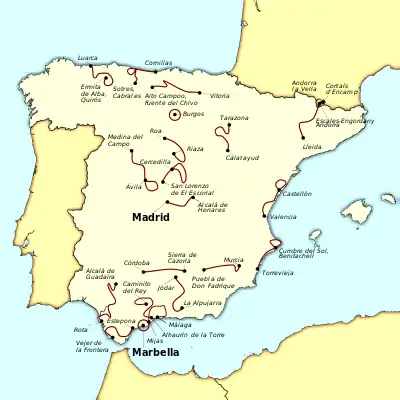 Map of the 2015 Vuelta a España route, from Marbella to Madrid.
Map of the 2015 Vuelta a España route, from Marbella to Madrid.
(stage courses in red)
The 2015 Vuelta a España was a three-week Grand Tour cycling race. The race was the 70th edition of the Vuelta a España and took place principally in Spain, although two stages took place partly or wholly in Andorra, and was the 22nd race in the 2015 UCI World Tour. The 3,358.1-kilometre (2,086.6 mi) race included 21 stages, beginning in Marbella on 22 August 2015 and finishing in Madrid on 13 September. It was won by Fabio Aru (Astana Pro Team), with Joaquim Rodríguez (Team Katusha) second and Rafał Majka (Tinkoff–Saxo) third. (Full article...) Image 11
Image 11 Map of the Greek and Latin states in southern Greece c. 1278
Map of the Greek and Latin states in southern Greece c. 1278
The Battle of Halmyros, known by earlier scholars as the Battle of the Cephissus or Battle of Orchomenos, was fought on 15 March 1311, between the forces of the Frankish Duchy of Athens and its vassals under Walter of Brienne against the mercenaries of the Catalan Company, resulting in a decisive victory for the mercenaries. (Full article...) Image 12
Image 12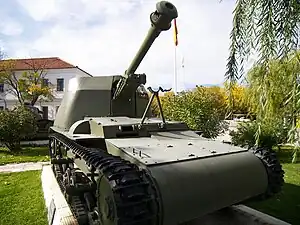 Verdeja 75 mm self-propelled howitzer, based on the Verdeja 1 prototype chassis
Verdeja 75 mm self-propelled howitzer, based on the Verdeja 1 prototype chassis
Verdeja was the name of a series of light tanks developed in Spain between 1938 and 1954 in an attempt to replace German Panzer I and Soviet T-26 tanks in Spanish service. (Full article...) Image 13
Image 13 Hieronymus Bosch, The Garden of Earthly Delights, oil on oak panels, 205.5 cm × 384.9 cm (81 in × 152 in), Museo del Prado, Madrid
Hieronymus Bosch, The Garden of Earthly Delights, oil on oak panels, 205.5 cm × 384.9 cm (81 in × 152 in), Museo del Prado, Madrid
The Garden of Earthly Delights is the modern title given to a triptych oil painting on oak panel painted by the Early Netherlandish master Hieronymus Bosch, between 1490 and 1510, when Bosch was between 40 and 60 years old. It has been housed in the Museo del Prado in Madrid, Spain since 1939. (Full article...) Image 14
Image 14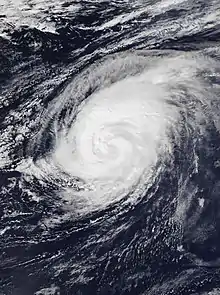 Hurricane Leslie near peak intensity southwest of the Azores on 11 October
Hurricane Leslie near peak intensity southwest of the Azores on 11 October
Hurricane Leslie (known as Storm Leslie or Cyclone Leslie), while extratropical, was the strongest cyclone of tropical origin to strike the Iberian Peninsula since 1842. A large, long-lived, and very erratic tropical cyclone, Leslie was the twelfth named storm and sixth hurricane of the 2018 Atlantic hurricane season.[1] The storm had a non-tropical origin, developing from an extratropical cyclone that was situated over the northern Atlantic on 22 September. The low quickly acquired subtropical characteristics and was classified as Subtropical Storm Leslie on the following day. The cyclone meandered over the northern Atlantic and gradually weakened, before merging with a frontal system on 25 September, which later intensified into a powerful hurricane-force extratropical low over the northern Atlantic. (Full article...) Image 15
Image 15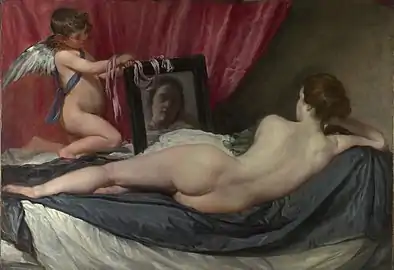
The Rokeby Venus (/ˈroʊkbi/ ROHK-bee; also known as The Toilet of Venus, Venus at her Mirror, Venus and Cupid; Spanish: La Venus del espejo) is a painting by Diego Velázquez, the leading artist of the Spanish Golden Age. Completed between 1647 and 1651, and probably painted during the artist's visit to Italy, the work depicts the goddess Venus in a sensual pose, lying on a bed with her back facing the viewer, and looking into a mirror held by the Roman god of physical love, her son Cupid. The painting is in the National Gallery, London. (Full article...) Image 16
Image 16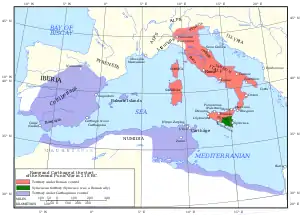 The western Mediterranean in 218 BC
The western Mediterranean in 218 BC
The Second Punic War (218 to 201 BC) was the second of three wars fought between Carthage and Rome, the two main powers of the western Mediterranean in the 3rd century BC. For 17 years the two states struggled for supremacy, primarily in Italy and Iberia, but also on the islands of Sicily and Sardinia and, towards the end of the war, in North Africa. After immense materiel and human losses on both sides, the Carthaginians were defeated. Macedonia, Syracuse and several Numidian kingdoms were drawn into the fighting, and Iberian and Gallic forces fought on both sides. There were three main military theatres during the war: Italy, where Hannibal defeated the Roman legions repeatedly, with occasional subsidiary campaigns in Sicily, Sardinia and Greece; Iberia, where Hasdrubal, a younger brother of Hannibal, defended the Carthaginian colonial cities with mixed success before moving into Italy; and Africa, where Rome finally won the war. (Full article...) Image 17Abu Abdullah Muhammad ibn Ismail (Arabic: أبو عبد الله محمد الرابع), known as Muhammad IV, (14 April 1315 – 25 August 1333) was the ruler of the Emirate of Granada on the Iberian Peninsula from 1325 to 1333. He was the sixth sultan of the Nasrid dynasty, succeeding to the throne at ten years old when his father, Ismail I (r. 1314–1325), was assassinated. (Full article...)
Image 17Abu Abdullah Muhammad ibn Ismail (Arabic: أبو عبد الله محمد الرابع), known as Muhammad IV, (14 April 1315 – 25 August 1333) was the ruler of the Emirate of Granada on the Iberian Peninsula from 1325 to 1333. He was the sixth sultan of the Nasrid dynasty, succeeding to the throne at ten years old when his father, Ismail I (r. 1314–1325), was assassinated. (Full article...) Image 18
Image 18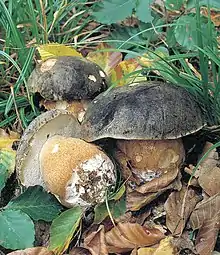
Boletus aereus, the dark cep or bronze bolete, is a highly prized and much sought-after edible mushroom in the family Boletaceae. The bolete is widely consumed in Spain (Basque Country and Navarre), France, Italy, Greece, and generally throughout the Mediterranean. Described in 1789 by French mycologist Pierre Bulliard, it is closely related to several other European boletes, including B. reticulatus, B. pinophilus, and the popular B. edulis. Some populations in North Africa have in the past been classified as a separate species, B. mamorensis, but have been shown to be phylogenetically conspecific to B. aereus and this taxon is now regarded as a synonym. (Full article...)![Image 19Portrait of a Man (presumed self-portrait of El Greco, c. 1595–1600) in Metropolitan Museum of Art, New York CityDomḗnikos Theotokópoulos (Greek: Δομήνικος Θεοτοκόπουλος, IPA: [ðoˈminikos θeotoˈkopulos]; 1 October 1541 – 7 April 1614), most widely known as El Greco (Spanish pronunciation: [el ˈɣɾeko]; "The Greek"), was a Greek painter, sculptor and architect of the Spanish Renaissance. El Greco was a nickname, and the artist normally signed his paintings with his full birth name in Greek letters, often adding the word Κρής (Krḗs), which means "Cretan". (Full article...)](../I/Blank.png.webp) Image 19
Image 19 Portrait of a Man (presumed self-portrait of El Greco, c. 1595–1600) in Metropolitan Museum of Art, New York City
Portrait of a Man (presumed self-portrait of El Greco, c. 1595–1600) in Metropolitan Museum of Art, New York City
Domḗnikos Theotokópoulos (Greek: Δομήνικος Θεοτοκόπουλος, IPA: [ðoˈminikos θeotoˈkopulos]; 1 October 1541 – 7 April 1614), most widely known as El Greco (Spanish pronunciation: [el ˈɣɾeko]; "The Greek"), was a Greek painter, sculptor and architect of the Spanish Renaissance. El Greco was a nickname, and the artist normally signed his paintings with his full birth name in Greek letters, often adding the word Κρής (Krḗs), which means "Cretan". (Full article...)![Image 20Futbol Club Barcelona (Catalan pronunciation: [fubˈbɔl ˈklub bəɾsəˈlonə] ⓘ), commonly referred to as Barcelona and colloquially known as Barça ([ˈbaɾsə]), is a professional football club based in Barcelona, Catalonia, Spain, that competes in La Liga, the top flight of Spanish football. (Full article...)](../I/Blank.png.webp) Image 20
Image 20.svg.png.webp)
Futbol Club Barcelona (Catalan pronunciation: [fubˈbɔl ˈklub bəɾsəˈlonə] ⓘ), commonly referred to as Barcelona and colloquially known as Barça ([ˈbaɾsə]), is a professional football club based in Barcelona, Catalonia, Spain, that competes in La Liga, the top flight of Spanish football. (Full article...) Image 21The battle of New Carthage took place in early 209 BC when a Roman army under Publius Cornelius Scipio successfully assaulted New Carthage, the capital of Carthaginian Iberia, which was defended by a garrison under Mago. The battle was part of the Second Punic War. (Full article...)
Image 21The battle of New Carthage took place in early 209 BC when a Roman army under Publius Cornelius Scipio successfully assaulted New Carthage, the capital of Carthaginian Iberia, which was defended by a garrison under Mago. The battle was part of the Second Punic War. (Full article...) Image 22
Image 22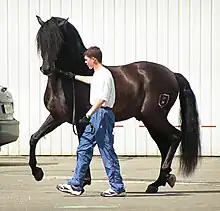 Andalusian horse
Andalusian horse
The Andalusian, also known as the Pure Spanish Horse or PRE (pura raza española), is a horse breed from the Iberian Peninsula, where its ancestors have lived for thousands of years. The Andalusian has been recognized as a distinct breed since the 15th century, and its conformation has changed very little over the centuries. Throughout its history, it has been known for its prowess as a war horse, and was prized by the nobility. The breed was used as a tool of diplomacy by the Spanish government, and kings across Europe rode and owned Spanish horses. During the 19th century, warfare, disease and crossbreeding reduced herd numbers dramatically, and despite some recovery in the late 19th century, the trend continued into the early 20th century. Exports of Andalusians from Spain were restricted until the 1960s, but the breed has since spread throughout the world, despite their low population. In 2010, there were more than 185,000 registered Andalusians worldwide. (Full article...) Image 23
Image 23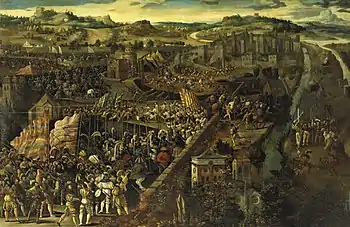 The Battle of Pavia, by an unknown Flemish artist
The Battle of Pavia, by an unknown Flemish artist
The Italian War of 1521–1526, sometimes known as the Four Years' War, (French: Sixième guerre d'Italie) was a part of the Italian Wars. The war pitted Francis I of France and the Republic of Venice against the Holy Roman Emperor Charles V, Henry VIII of England, and the Papal States. It arose from animosity over the election of Charles as Emperor in 1519–1520 and from Pope Leo X's need to ally with Charles against Martin Luther. (Full article...) Image 24
Image 24
The Mercenary War, also known as the Truceless War, was a mutiny by troops that were employed by Carthage at the end of the First Punic War (264–241 BC), supported by uprisings of African settlements revolting against Carthaginian control. It lasted from 241 to late 238 or early 237 BC and ended with Carthage suppressing both the mutiny and the revolt. (Full article...) Image 25
Image 25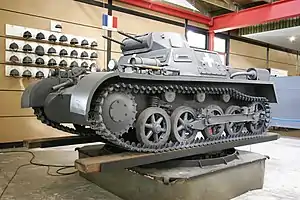 A Wehrmacht Panzerkampfwagen I Ausf. A light tank on display at the Deutsches Panzermuseum Munster in Munster, Germany.
A Wehrmacht Panzerkampfwagen I Ausf. A light tank on display at the Deutsches Panzermuseum Munster in Munster, Germany.
The Panzer I was a light tank produced by Nazi Germany in the 1930s. Its name is short for Panzerkampfwagen I (German for "armored fighting vehicle mark I"), abbreviated as PzKpfw I. The tank's official German ordnance inventory designation was Sd.Kfz. 101 ("special purpose vehicle 101"). (Full article...)
Selected biography
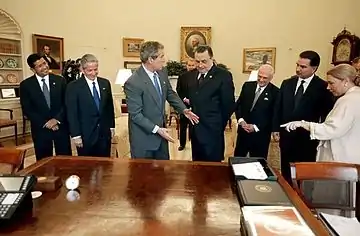
Aguas Santas Ocaña Navarro (born April 23, 1963 in Brenes, Seville, Spain) was the first lady of Honduras. Aguas Santas, her double given name means "holy waters" in Spanish. Navarro was the wife of former President Ricardo Maduro, marrying him when he was already President in October 2002 after meeting him during a 2 year stint working in the Spanish embassy in Tegucigalpa. She received dual Spanish-Honduran citizenship in 2004.
She and her husband legally adopted five children, two of whom had their families murdered but she now has 13 children in her care, all of whom accompanied her to Nicaragua on January 27, 2006, the day she ceased being first lady. She will work there with Nicaraguan children in need, and will help the wife of Nicaragua's President Enrique Bolaños. The five children legally adopted are called Leidy Jackeline, Kevin Josué, Francis, Joan and Jackie. During 2003, Ocaña Navarro returned to live in Spain for a short period of time, sparking rumours that she and her husband were about to divorce. The separation was allegedly provoked because Ricardo Maduro named a former girlfriend, Mireya Batres, to be Honduras' Minister of Culture. Batres was sacked and she returned.
Selected picture
 Image 1
Image 1 A portrait of Francisco Martínez de la RosaCredit: Petronas
A portrait of Francisco Martínez de la RosaCredit: Petronas
Francisco de Paula Martinez de la Rosa (10 March 1789 — 1862) was a dramatist and statesman. Rosa was born in Granada, and educated at the University of Granada. Rosa became well known after epigrams he performed on celebrities.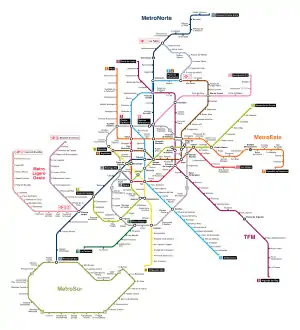 Image 2Map: JavitomadThe Madrid Metro is a rapid transit system serving the Spanish capital, Madrid. It was inaugurated in 1919 by King Alfonso, with a single line which ran for 3.48 km (2.16 mi) between Puerta del Sol and Cuatro Caminos, with eight stops. The present system has 301 stations on 13 lines plus one branch line, totalling 294 km (183 mi).
Image 2Map: JavitomadThe Madrid Metro is a rapid transit system serving the Spanish capital, Madrid. It was inaugurated in 1919 by King Alfonso, with a single line which ran for 3.48 km (2.16 mi) between Puerta del Sol and Cuatro Caminos, with eight stops. The present system has 301 stations on 13 lines plus one branch line, totalling 294 km (183 mi). Image 3Photo: Mick StephensonThe peaks of the Central Massif overlook the village of Sotres in Cabrales, located in the Picos de Europa, a mountain range in northern Spain forming part of the Cantabrian Mountains. The name (literally: "Peaks of Europe") is believed to derive from being the first European landforms visible to mariners arriving from the Americas.
Image 3Photo: Mick StephensonThe peaks of the Central Massif overlook the village of Sotres in Cabrales, located in the Picos de Europa, a mountain range in northern Spain forming part of the Cantabrian Mountains. The name (literally: "Peaks of Europe") is believed to derive from being the first European landforms visible to mariners arriving from the Americas. Image 4
Image 4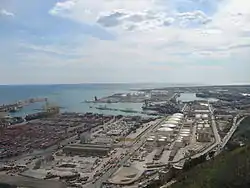 A view of Barcelona Free Port.Credit: Lofor
A view of Barcelona Free Port.Credit: Lofor
The Barcelona Free Port or Zona franca de Barcelona is a tariff-free industrial park that has developed within the Port of Barcelona, across the flat land of the Llobregat delta between the city of Barcelona and Barcelona International Airport to the south. Image 5
Image 5.jpg.webp) The Puente NuevoCredit: Sucrine
The Puente NuevoCredit: Sucrine Image 6
Image 6 Timanfaya National ParkCredit: Yummifruitbat
Timanfaya National ParkCredit: Yummifruitbat
Timanfaya National Park (Spanish: Parque Nacional de Timanfaya) is a national park, covering the southern area of Tinajo, Las Palmas and the northern area of Yaiza, Las Palmas. The parkland is made up of volcanic soil, with the strongest recorded eruptions occurring between 1730 and 1736.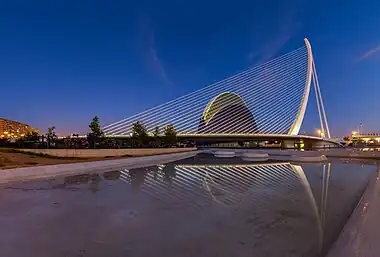 Image 7Photograph: Diego DelsoThe Assut de l'Or Bridge is a white single-pylon cable-stayed bridge in the City of Arts and Sciences, Valencia, Spain. Completed in 2008, it was designed by Valencian architect and civil engineer Santiago Calatrava as a variant of his cantilever spar cable-stayed bridge in Seville.
Image 7Photograph: Diego DelsoThe Assut de l'Or Bridge is a white single-pylon cable-stayed bridge in the City of Arts and Sciences, Valencia, Spain. Completed in 2008, it was designed by Valencian architect and civil engineer Santiago Calatrava as a variant of his cantilever spar cable-stayed bridge in Seville.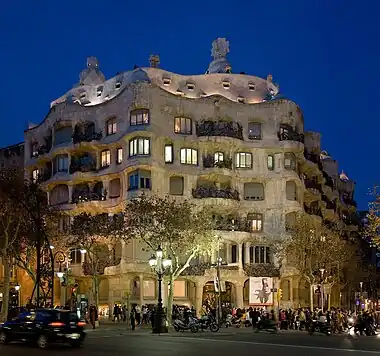 Image 8Photo credit: David IliffThe Casa Milà, a 1912 work by Catalán architect Antoni Gaudi, in the Eixample district of Barcelona, Spain. Gaudí's fascination with trencadís-influenced decoration and curves (predating biomorphism by almost 20 years) can be seen here.
Image 8Photo credit: David IliffThe Casa Milà, a 1912 work by Catalán architect Antoni Gaudi, in the Eixample district of Barcelona, Spain. Gaudí's fascination with trencadís-influenced decoration and curves (predating biomorphism by almost 20 years) can be seen here. Image 9Artist: UnknownFerdinand I, Holy Roman Emperor, is represented in this anonymous portrait as a young archduke in his native Spain. He left Spain in his early twenties, to start his life as future King of the Romans and successor to his grandfather, Maximilian I. His older brother Charles eventually succeeded as Holy Roman Emperor, but Ferdinand was elected after Charles's abdication. Philip, Charles's son, inherited Spain and became King Philip II of Spain. Ferdinand ruled between 1558 and 1564, for nearly six years.
Image 9Artist: UnknownFerdinand I, Holy Roman Emperor, is represented in this anonymous portrait as a young archduke in his native Spain. He left Spain in his early twenties, to start his life as future King of the Romans and successor to his grandfather, Maximilian I. His older brother Charles eventually succeeded as Holy Roman Emperor, but Ferdinand was elected after Charles's abdication. Philip, Charles's son, inherited Spain and became King Philip II of Spain. Ferdinand ruled between 1558 and 1564, for nearly six years.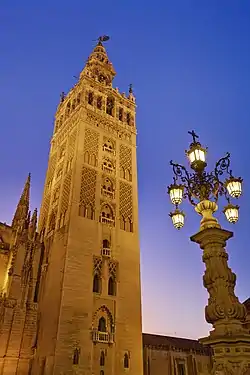 Image 10Photo: David IliffThe Giralda is a 104.5 m (343 ft) tall bell tower for the Seville Cathedral in Seville, Andalusia, Spain. It was originally constructed as a minaret in 1198, when Seville was ruled by the Almohad Caliphate. After the city was taken by the Christians in the Reconquista, the city's mosque was converted to a church. The upper third of the structure was completed during the Spanish Renaissance.
Image 10Photo: David IliffThe Giralda is a 104.5 m (343 ft) tall bell tower for the Seville Cathedral in Seville, Andalusia, Spain. It was originally constructed as a minaret in 1198, when Seville was ruled by the Almohad Caliphate. After the city was taken by the Christians in the Reconquista, the city's mosque was converted to a church. The upper third of the structure was completed during the Spanish Renaissance. Image 11Architecture credit: José Grases Riera; photographed by Carlos DelgadoThe Monument to Alfonso XII is located in Buen Retiro Park (El Retiro) in Madrid, Spain. Measuring 30 m (98 ft) high, 86 m (282 ft) long, and 58 m (190 ft) wide, it has at its center an equestrian statue of King Alfonso XII, cast in bronze by the Spanish sculptor Mariano Benlliure in 1904. The monument is situated on the eastern edge of an artificial lake near the center of the park and was inaugurated on 6 June 1922.
Image 11Architecture credit: José Grases Riera; photographed by Carlos DelgadoThe Monument to Alfonso XII is located in Buen Retiro Park (El Retiro) in Madrid, Spain. Measuring 30 m (98 ft) high, 86 m (282 ft) long, and 58 m (190 ft) wide, it has at its center an equestrian statue of King Alfonso XII, cast in bronze by the Spanish sculptor Mariano Benlliure in 1904. The monument is situated on the eastern edge of an artificial lake near the center of the park and was inaugurated on 6 June 1922. Image 12
Image 12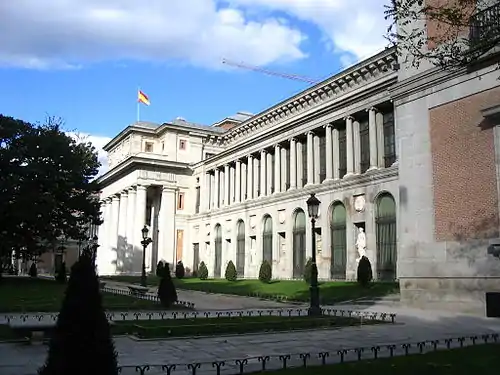 An exterior view of the Museo del Prado.The Museo del Prado is a museum and art gallery located in Madrid; the capital of Spain. It features one of the world's finest collections of European art, from the 12th century through the early 19th century, based on the former Spanish Royal Collection.
An exterior view of the Museo del Prado.The Museo del Prado is a museum and art gallery located in Madrid; the capital of Spain. It features one of the world's finest collections of European art, from the 12th century through the early 19th century, based on the former Spanish Royal Collection.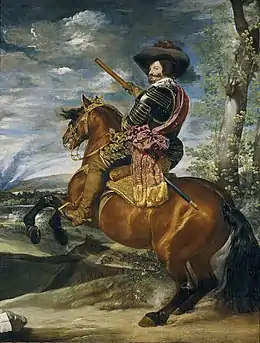 Image 13Gaspar de Guzmán, Count-Duke of Olivares (1587–1645) was a Spanish royal favourite of Philip IV and minister. As prime minister from 1621 to 1643, he over-exerted Spain in foreign affairs and unsuccessfully attempted domestic reform. His policies of committing Spain to recapture the Dutch Republic led to his major involvement in the Thirty Years War. This portrait was completed in 1634, with its composition referring to Olivares' military leadership in the service of King Philip.
Image 13Gaspar de Guzmán, Count-Duke of Olivares (1587–1645) was a Spanish royal favourite of Philip IV and minister. As prime minister from 1621 to 1643, he over-exerted Spain in foreign affairs and unsuccessfully attempted domestic reform. His policies of committing Spain to recapture the Dutch Republic led to his major involvement in the Thirty Years War. This portrait was completed in 1634, with its composition referring to Olivares' military leadership in the service of King Philip.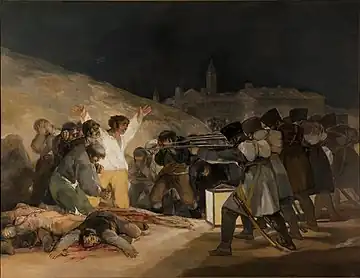 Image 14Painting: Francisco GoyaThe Third of May 1808 is a painting completed in 1814 by the Spanish master Francisco Goya, now in the Museo del Prado, Madrid. Along with its companion piece of the same size, The Second of May 1808 (or The Charge of the Mamelukes), it was commissioned by the provisional government of Spain at Goya's suggestion. Goya sought to commemorate Spanish resistance to Napoleon's armies during the Peninsular War.
Image 14Painting: Francisco GoyaThe Third of May 1808 is a painting completed in 1814 by the Spanish master Francisco Goya, now in the Museo del Prado, Madrid. Along with its companion piece of the same size, The Second of May 1808 (or The Charge of the Mamelukes), it was commissioned by the provisional government of Spain at Goya's suggestion. Goya sought to commemorate Spanish resistance to Napoleon's armies during the Peninsular War. Image 15Photo credit: DiliffThe Torre Agbar is a landmark skyscraper and the third tallest building in Barcelona, Spain. It was designed by French architect Jean Nouvel, who stated that the shape of the Torre Agbar was inspired by the mountains of Montserrat that surround Barcelona, and by the shape of a geyser of water rising into the air. Its design combines a number of different architectural concepts, resulting in a striking structure built with reinforced concrete, covered with a facade of glass, and over 4,500 window openings cut out of the structural concrete.
Image 15Photo credit: DiliffThe Torre Agbar is a landmark skyscraper and the third tallest building in Barcelona, Spain. It was designed by French architect Jean Nouvel, who stated that the shape of the Torre Agbar was inspired by the mountains of Montserrat that surround Barcelona, and by the shape of a geyser of water rising into the air. Its design combines a number of different architectural concepts, resulting in a striking structure built with reinforced concrete, covered with a facade of glass, and over 4,500 window openings cut out of the structural concrete. Image 16
Image 16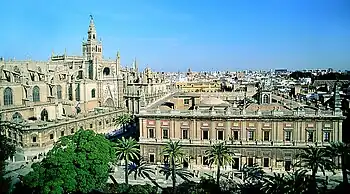 Seville Cathedral.Credit: Seville Tourism Bureau
Seville Cathedral.Credit: Seville Tourism Bureau
The Cathedral of Seville, formally Catedral de Santa María de la Sede (Cathedral of Saint Mary of the See) was begun in 1402, with construction continuing into the 16th century. It is the largest of all Roman Catholic cathedrals (Saint Peter's Basilica not being a cathedral) and also the largest Medieval Gothic religious building, in terms of both area and volume..jpg.webp) Image 17Painting: Marià FortunyThe Spanish Wedding is an oil on panel painting by Marià Fortuny completed over a two-year period ending in 1870. It depicts the signing of a wedding contract in 18th century Spain and was influenced heavily by the works of Francisco Goya, whom the artist admired. It is currently exhibited at the National Art Museum of Catalonia.
Image 17Painting: Marià FortunyThe Spanish Wedding is an oil on panel painting by Marià Fortuny completed over a two-year period ending in 1870. It depicts the signing of a wedding contract in 18th century Spain and was influenced heavily by the works of Francisco Goya, whom the artist admired. It is currently exhibited at the National Art Museum of Catalonia.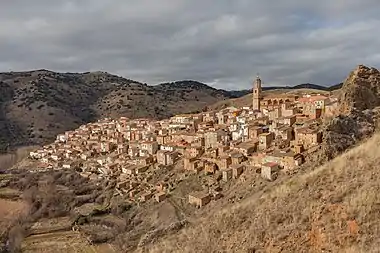 Image 18Photograph: Diego DelsoMoros is a municipality in the province of Zaragoza, Spain. Located in the Sistema Ibérico mountain range, the village lies on a hill, with the church and former town hall at the top, the residences in the middle, and the sheep pens at the bottom. The population of Moros has been steadily decreasing in recent decades, and was 478 in 2006.
Image 18Photograph: Diego DelsoMoros is a municipality in the province of Zaragoza, Spain. Located in the Sistema Ibérico mountain range, the village lies on a hill, with the church and former town hall at the top, the residences in the middle, and the sheep pens at the bottom. The population of Moros has been steadily decreasing in recent decades, and was 478 in 2006.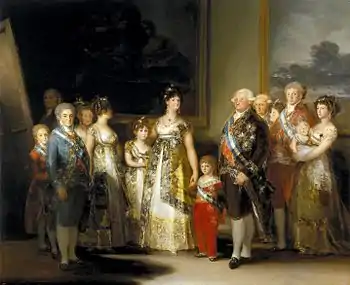 Image 19Painting credit: Francisco GoyaCharles IV of Spain and His Family is a portrait of the royal family of Spain painted by Francisco Goya in 1800 and 1801. King Charles IV, his wife Maria Luisa of Parma, and his children and relatives are dressed in the height of contemporary fashion, lavishly adorned with jewelry and the sashes of the order of Charles III. The artist does not attempt to flatter the family; instead the group portrait is unflinchingly realist, both in detail and tone. The artist, seated at his easel, is visible in the background. The painting is in the collection of the Museo del Prado in Madrid.
Image 19Painting credit: Francisco GoyaCharles IV of Spain and His Family is a portrait of the royal family of Spain painted by Francisco Goya in 1800 and 1801. King Charles IV, his wife Maria Luisa of Parma, and his children and relatives are dressed in the height of contemporary fashion, lavishly adorned with jewelry and the sashes of the order of Charles III. The artist does not attempt to flatter the family; instead the group portrait is unflinchingly realist, both in detail and tone. The artist, seated at his easel, is visible in the background. The painting is in the collection of the Museo del Prado in Madrid.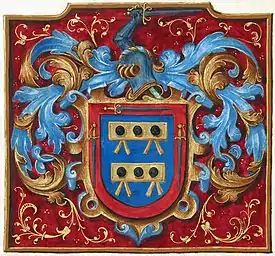 Image 20Image: Royal Household of Spain; Restoration: Lise BroerA Grant of Arms by Philip II of Spain to Alonso de Mesa and Hernando de Mesa, signed 25 November 1566. In Spanish heraldry, coats of arms were granted based almost entirely on military service, which made it possible for commoners to join the ranks of the Spanish nobility. Also unique to Spain was that titles could be inherited through females and via illegitimacy.
Image 20Image: Royal Household of Spain; Restoration: Lise BroerA Grant of Arms by Philip II of Spain to Alonso de Mesa and Hernando de Mesa, signed 25 November 1566. In Spanish heraldry, coats of arms were granted based almost entirely on military service, which made it possible for commoners to join the ranks of the Spanish nobility. Also unique to Spain was that titles could be inherited through females and via illegitimacy. Image 21Photograph: J.Ligero & I.BarriosA three-month old Spanish ibex (Capra pyrenaica) in Sierra de Gredos, Spain. These ibexes are strong mountain animals characterized by their large and flexible hooves and short legs.
Image 21Photograph: J.Ligero & I.BarriosA three-month old Spanish ibex (Capra pyrenaica) in Sierra de Gredos, Spain. These ibexes are strong mountain animals characterized by their large and flexible hooves and short legs.
The two sexes of adults form separate social groups; juveniles stay with the female groups from birth until the following birth season, when they leave. Yearling males then join male groups, while females eventually return to their mothers' groups and stay several years. Image 22
Image 22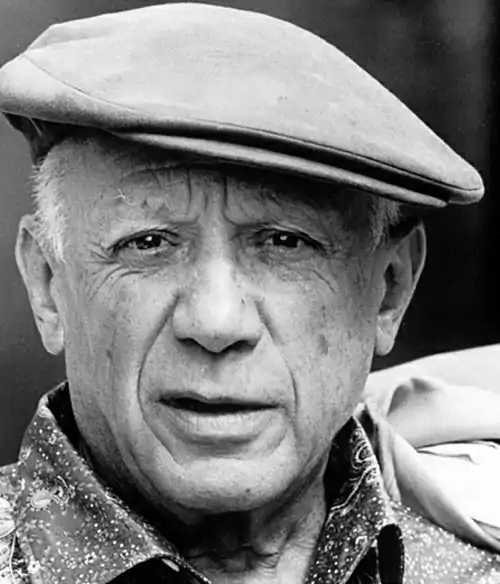 Pablo PicassoCredit: TyreniusPablo Picasso (October 25, 1881 — April 8, 1973) was an artist and sculptor. Picasso was born in Málaga, Spain. This image was taken of him in 1962, eleven years before his death.
Pablo PicassoCredit: TyreniusPablo Picasso (October 25, 1881 — April 8, 1973) was an artist and sculptor. Picasso was born in Málaga, Spain. This image was taken of him in 1962, eleven years before his death.
Did you know...
- ... that Chief Rabbi of Madrid Yehuda Benasouli's first language was Castilian Spanish, but he also knew Hebrew, French, Arabic, Ladino, Haketia, and some English?
- ... that foreign nationals wishing to gain Philippine citizenship need to demonstrate proficiency in English or Spanish as well as a Philippine language?
- ... that Spanish diplomat Ángel Sagaz Zubelzu secured the release of more than 1,500 Jews from prison in Egypt by arguing they were descended from expelled Jews and thus entitled to Spanish citizenship?
- ... that the Spanish Inquisition sentenced Diego Mateo Zapata to wear the sanbenito, receive 200 lashes, have his 600 books confiscated, and be exiled, despite being acquitted?
- ... that the Spanish priest Baltasar Calvo was denounced as a "Valencian Robespierre" for leading an 1808 massacre of French residents in Valencia?
- ... that in 2019, a rockfall on the Spanish Autovia C-13 caused skiing holidays to be cancelled?
 Good article –
Good article –
 Image 1Abd al-Malik ibn Umar ibn Marwan ibn al-Hakam (Arabic: عبد الملك ابن عمر بن مروان بن الحكم, romanized: ʿAbd al-Malik ibn ʿUmar ibn Marwān ibn al-Ḥakam; c. 718– c. 778), also known as al-Marwani, was an Umayyad prince, general and governor of Seville under the first Umayyad emir of al-Andalus (Islamic Spain), Abd al-Rahman I (r. 756–788). He led two major campaigns in 758 and 774, the first against the previous ruler of al-Andalus Yusuf ibn Abd al-Rahman al-Fihri and the second against the rebellious troops of Seville and Beja. His victories solidified the Umayyad emirate's control of western al-Andalus. His descendants continued to play important political and military roles in the Emirate well into the 10th century. (Full article...)
Image 1Abd al-Malik ibn Umar ibn Marwan ibn al-Hakam (Arabic: عبد الملك ابن عمر بن مروان بن الحكم, romanized: ʿAbd al-Malik ibn ʿUmar ibn Marwān ibn al-Ḥakam; c. 718– c. 778), also known as al-Marwani, was an Umayyad prince, general and governor of Seville under the first Umayyad emir of al-Andalus (Islamic Spain), Abd al-Rahman I (r. 756–788). He led two major campaigns in 758 and 774, the first against the previous ruler of al-Andalus Yusuf ibn Abd al-Rahman al-Fihri and the second against the rebellious troops of Seville and Beja. His victories solidified the Umayyad emirate's control of western al-Andalus. His descendants continued to play important political and military roles in the Emirate well into the 10th century. (Full article...) Image 2The Legazpi-Sikatuna Blood Compact or Sandugo (Spanish: Pacto de Sangre) was a blood compact, performed in the island of Bohol in the Philippines, between the Spanish explorer Miguel López de Legazpi and Datu Sikatuna, chieftain of Bohol, on March 16, 1565, to seal their friendship following tribal tradition. This is considered the first treaty of friendship between the Spaniards and Filipinos. "Sandugo" is a Visayan word which means "one blood". (Full article...)
Image 2The Legazpi-Sikatuna Blood Compact or Sandugo (Spanish: Pacto de Sangre) was a blood compact, performed in the island of Bohol in the Philippines, between the Spanish explorer Miguel López de Legazpi and Datu Sikatuna, chieftain of Bohol, on March 16, 1565, to seal their friendship following tribal tradition. This is considered the first treaty of friendship between the Spaniards and Filipinos. "Sandugo" is a Visayan word which means "one blood". (Full article...) Image 3Onneca Fortúnez or Iñiga Fortúnez (c. 848 – after 890) was a Basque princess from the Kingdom of Pamplona, later known as the Kingdom of Navarre. She was the daughter of Fortún Garcés of Pamplona and his wife Auria. At the time of Onneca's birth, which occurred between 848 and 850, the Iberian Peninsula was largely under the domination of the Muslim Umayyad dynasty. Only the northern kingdoms of Asturias, Pamplona and the Pyrenean threshold remained under control of Roman Catholic rulers. Onneca was a member of the Íñiguez dynasty, named after her great-grandfather Íñigo Arista, who founded the Kingdom of Pamplona. (Full article...)
Image 3Onneca Fortúnez or Iñiga Fortúnez (c. 848 – after 890) was a Basque princess from the Kingdom of Pamplona, later known as the Kingdom of Navarre. She was the daughter of Fortún Garcés of Pamplona and his wife Auria. At the time of Onneca's birth, which occurred between 848 and 850, the Iberian Peninsula was largely under the domination of the Muslim Umayyad dynasty. Only the northern kingdoms of Asturias, Pamplona and the Pyrenean threshold remained under control of Roman Catholic rulers. Onneca was a member of the Íñiguez dynasty, named after her great-grandfather Íñigo Arista, who founded the Kingdom of Pamplona. (Full article...) Image 4Pikes Hotel, now known as Pikes Ibiza, is a luxury hotel in Ibiza, in the Balearic Islands of Spain. It is located in the countryside, 1.6 miles (2.6 km) to the northeast of the town of Sant Antoni de Portmany, and 10.2 miles (16.4 km) to the northwest of Ibiza Town. A 15th-century stone mansion which was a finca (farm estate), it was converted into a hotel in 1978 by British-born Australian Anthony Pike. (Full article...)
Image 4Pikes Hotel, now known as Pikes Ibiza, is a luxury hotel in Ibiza, in the Balearic Islands of Spain. It is located in the countryside, 1.6 miles (2.6 km) to the northeast of the town of Sant Antoni de Portmany, and 10.2 miles (16.4 km) to the northwest of Ibiza Town. A 15th-century stone mansion which was a finca (farm estate), it was converted into a hotel in 1978 by British-born Australian Anthony Pike. (Full article...) Image 5Spain in Our Hearts: Americans in the Spanish Civil War, 1936–1939 is a non-fiction book by Adam Hochschild that was first published by Houghton Mifflin Harcourt on March 29, 2016. The book is an account of the American volunteers who participated in the Spanish Civil War from 1936 to 1939. The story centers around several American volunteer fighters and journalists, tracing their motivations for joining the war and their experiences during the war which left many disillusioned. The book explains the involvement of foreign leaders including Adolf Hitler, Benito Mussolini and Joseph Stalin, and explains why the Republican faction ultimately lost. (Full article...)
Image 5Spain in Our Hearts: Americans in the Spanish Civil War, 1936–1939 is a non-fiction book by Adam Hochschild that was first published by Houghton Mifflin Harcourt on March 29, 2016. The book is an account of the American volunteers who participated in the Spanish Civil War from 1936 to 1939. The story centers around several American volunteer fighters and journalists, tracing their motivations for joining the war and their experiences during the war which left many disillusioned. The book explains the involvement of foreign leaders including Adolf Hitler, Benito Mussolini and Joseph Stalin, and explains why the Republican faction ultimately lost. (Full article...)![Image 6Degrelle during WWIILéon Joseph Marie Ignace Degrelle (French: [dəgʁɛl]; 15 June 1906 – 31 March 1994) was a Belgian Walloon politician and Nazi collaborator. He rose to prominence in Belgium in the 1930s as the leader of the Rexist Party (Rex). During the German occupation of Belgium during World War II, he enlisted in the German army and fought in the Walloon Legion on the Eastern Front. After the collapse of the Nazi regime, Degrelle escaped and went into exile in Francoist Spain, where he remained a prominent figure in neo-Nazi politics. (Full article...)](../I/Blank.png.webp) Image 6
Image 6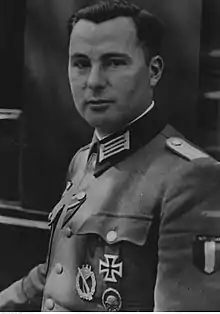 Degrelle during WWII
Degrelle during WWII
Léon Joseph Marie Ignace Degrelle (French: [dəgʁɛl]; 15 June 1906 – 31 March 1994) was a Belgian Walloon politician and Nazi collaborator. He rose to prominence in Belgium in the 1930s as the leader of the Rexist Party (Rex). During the German occupation of Belgium during World War II, he enlisted in the German army and fought in the Walloon Legion on the Eastern Front. After the collapse of the Nazi regime, Degrelle escaped and went into exile in Francoist Spain, where he remained a prominent figure in neo-Nazi politics. (Full article...) Image 7
Image 7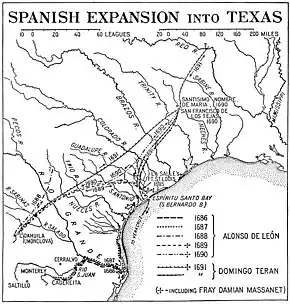 Trails taken by Spanish explorers from Mexico into Texas.
Trails taken by Spanish explorers from Mexico into Texas.
Spanish Texas was one of the interior provinces of the colonial Viceroyalty of New Spain from 1519 until 1821. Spain claimed ownership of the region in 1519. Slave raids by Spaniards into what became Texas began in the 16th century and created an atmosphere of antagonism with Native Americans (Indians) which would cause endless difficulties for the Spanish in the future. Spain did not attempt to establish a permanent presence until after France established the colony of Fort Saint Louis in 1685. In 1688, the French colony failed due to internal dissention and attacks by the Karankawa Indians. In 1690, responding to fear of French encroachment, Spanish explorer Alonso de León escorted several Catholic missionaries to east Texas, where they established the first mission in Texas. That attempt to establish a Spanish colony failed due to the hostility of the Caddo Indians. (Full article...) Image 8
Image 8.jpg.webp) Outgoing prime minister Mariano Rajoy (right) congratulating incoming prime minister Pedro Sánchez (left) upon losing the no confidence vote on 1 June 2018
Outgoing prime minister Mariano Rajoy (right) congratulating incoming prime minister Pedro Sánchez (left) upon losing the no confidence vote on 1 June 2018
A motion of no confidence in the Spanish government of Mariano Rajoy was debated and voted in the Congress of Deputies between 31 May and 1 June 2018. It was brought by Spanish Socialist Workers' Party (PSOE) leader Pedro Sánchez after the governing People's Party (PP) was found to have profited from the illegal kickbacks-for-contracts scheme of the Gürtel case in a court ruling made public the previous day. This was the fourth motion of no confidence since the Spanish transition to democracy and the first one to be successful, as well the second to be submitted against Mariano Rajoy after the Unidos Podemos's one the previous year. Coincidentally, it was held 38 years after the first such vote of no confidence in Spain on 30 May 1980. (Full article...) Image 9
Image 9
The Burgos trials (Spanish: Proceso de Burgos) were a series of military tribunals held in the Spanish city of Burgos from 3 to 9 December 1970. The trials prosecuted 16 members of the Basque separatist organisation Euskadi Ta Askatasuna (ETA) for their involvement in two murders of police officers in 1968. Causing international outrage and sympathy for the defendants, the trials are best known for six death sentences handed out by the tribunals which were later commuted to lengthy prison spells. (Full article...) Image 10
Image 10_-_Google_Art_Project.jpg.webp)
Tristan and Isolde (Spanish: Tristán e Isolda) is the title of two oil paintings by the Spanish artist Rogelio de Egusquiza. Both works are based on the opera Tristan und Isolde by the German composer Richard Wagner, whom Egusquiza idolised. The first painting, subtitled Death and also known as La mort d'Isolde (The Death of Isolde), was completed in 1910 and depicts Isolde's "Liebestod", as she collapses in death upon the lifeless body of Tristan. The second painting, subtitled Life, was completed two years later and depicts the lovers embracing in the night, a scene from the second act of Wagner's opera. (Full article...) Image 11
Image 11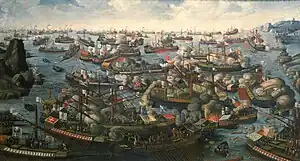 The Battle of Lepanto
The Battle of Lepanto
The Fourth Ottoman–Venetian War, also known as the War of Cyprus (Italian: Guerra di Cipro) was fought between 1570 and 1573. It was waged between the Ottoman Empire and the Republic of Venice, the latter joined by the Holy League, a coalition of Christian states formed under the auspices of the Pope, which included Spain (with Naples and Sicily), the Republic of Genoa, the Duchy of Savoy, the Knights Hospitaller, the Grand Duchy of Tuscany, and other Italian states. (Full article...) Image 12The 2016 Volta a Catalunya was a road cycling stage race that took place in Catalonia, Spain, from 21 to 27 March. It was the fifth race of the 2016 UCI World Tour and the 96th edition of the Volta a Catalunya. (Full article...)
Image 12The 2016 Volta a Catalunya was a road cycling stage race that took place in Catalonia, Spain, from 21 to 27 March. It was the fifth race of the 2016 UCI World Tour and the 96th edition of the Volta a Catalunya. (Full article...) Image 13
Image 13 Still Life with a Guitar by Yepes, c. 1650
Still Life with a Guitar by Yepes, c. 1650
Tomás de Yepes or Hiepes (also known as Thomas de Yepes or Hiepes; 1595 or 1600 – 16 June 1674) was a Spanish painter in the Kingdom of Valencia. An artist of the Baroque movement, he worked as a painter of still life and bodegón—still life paintings depicting pantry items. He made paintings both for clients and public events. Although his activity started in the second decade of the 17th century, most of the works attributed to him come after 1642. He continued to paint until the year of his death. (Full article...) Image 14The North Korean Embassy in Madrid incident is an event that occurred on 22 February 2019 at the North Korean embassy in Madrid, Spain. The political group Free Joseon, which is opposed to the incumbent Kim Jong Un regime of North Korea, is alleged to have attacked and raided the embassy, while the group maintains that they were invited in to facilitate a high-level defection. A group of individuals stole mobile telephones, two pen drives and a hard drive from the embassy and handed them to the Federal Bureau of Investigation (FBI) in the United States. The event took place after the Singapore summit between North Korea (DPRK) and the United States and prior to the approach of the Hanoi summit. As of early April 2019, one person had been arrested in connection with the incident and two international arrest warrants had been issued by the Spanish Audiencia Nacional. The suspected perpetrators are citizens of Mexico, the US and South Korea, although the latter two governments denied any connection with the incident. (Full article...)
Image 14The North Korean Embassy in Madrid incident is an event that occurred on 22 February 2019 at the North Korean embassy in Madrid, Spain. The political group Free Joseon, which is opposed to the incumbent Kim Jong Un regime of North Korea, is alleged to have attacked and raided the embassy, while the group maintains that they were invited in to facilitate a high-level defection. A group of individuals stole mobile telephones, two pen drives and a hard drive from the embassy and handed them to the Federal Bureau of Investigation (FBI) in the United States. The event took place after the Singapore summit between North Korea (DPRK) and the United States and prior to the approach of the Hanoi summit. As of early April 2019, one person had been arrested in connection with the incident and two international arrest warrants had been issued by the Spanish Audiencia Nacional. The suspected perpetrators are citizens of Mexico, the US and South Korea, although the latter two governments denied any connection with the incident. (Full article...) Image 15
Image 15 A 1782 Spanish map of Roatán. New Port Royal is visible on the right side of the island.
A 1782 Spanish map of Roatán. New Port Royal is visible on the right side of the island.
The Battle of Roatán (sometimes spelled "Rattan") was an American War of Independence battle fought on March 16, 1782, between British and Spanish forces for control of Roatán, an island off the Caribbean coast of present-day Honduras. (Full article...) Image 16
Image 16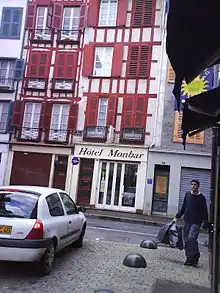 Monbar Hotel in 2007
Monbar Hotel in 2007
The Monbar Hotel attack was carried out by the Grupos Antiterroristas de Liberación (GAL), a Spanish state-sponsored death squad, on 25 September 1985 in Bayonne, Pyrénées-Atlantiques, France. The targets were four members of the Basque separatist terrorist group Euskadi Ta Askatasuna (ETA), whom the Spanish government believed to be senior figures in the organization, itself proscribed as a terrorist group in Spain and France. All four people were killed, with a fifth person, apparently unconnected to ETA, injured in the shooting. This represented the deadliest attack carried out by the GAL. Although two of the participants were apprehended shortly after the shooting, controversy surrounded the possible involvement of senior figures in the Spanish police. (Full article...) Image 17"Si Tú Te Vas" (English: "If You Go Away") is a song by Spanish singer Enrique Iglesias from his 1995 eponymous debut studio album. The song was co-written by Iglesias when he was 16 and his friend Roberto Morales with Rafael Pérez-Botija handling its production. It was released as the lead single from the album in October 1995. Iglesias recorded a demo of the song which was accepted by Guillermo Santiso, the president of Fonovisa Records, which led to Iglesias signing on with the company. A pop ballad, the song is about a man inspired by love and is afraid of a farewell. A music video for the song was filmed in New York and led to Iglesias being nominated for Best New Artist at the 1996 MTV Latino Awards. (Full article...)
Image 17"Si Tú Te Vas" (English: "If You Go Away") is a song by Spanish singer Enrique Iglesias from his 1995 eponymous debut studio album. The song was co-written by Iglesias when he was 16 and his friend Roberto Morales with Rafael Pérez-Botija handling its production. It was released as the lead single from the album in October 1995. Iglesias recorded a demo of the song which was accepted by Guillermo Santiso, the president of Fonovisa Records, which led to Iglesias signing on with the company. A pop ballad, the song is about a man inspired by love and is afraid of a farewell. A music video for the song was filmed in New York and led to Iglesias being nominated for Best New Artist at the 1996 MTV Latino Awards. (Full article...)![Image 18Money Heist (Spanish: La casa de papel, [la ˈkasa ðe paˈpel], lit. 'The House of Paper') is a Spanish heist crime drama television series created by Álex Pina. The series traces two long-prepared heists led by the Professor (Álvaro Morte), one on the Royal Mint of Spain, and one on the Bank of Spain, told from the perspective of one of the robbers, Tokyo (Úrsula Corberó). The narrative is told in a real-time-like fashion and relies on flashbacks, time-jumps, hidden character motivations, and an unreliable narrator for complexity. (Full article...)](../I/Blank.png.webp) Image 18
Image 18
Money Heist (Spanish: La casa de papel, [la ˈkasa ðe paˈpel], lit. 'The House of Paper') is a Spanish heist crime drama television series created by Álex Pina. The series traces two long-prepared heists led by the Professor (Álvaro Morte), one on the Royal Mint of Spain, and one on the Bank of Spain, told from the perspective of one of the robbers, Tokyo (Úrsula Corberó). The narrative is told in a real-time-like fashion and relies on flashbacks, time-jumps, hidden character motivations, and an unreliable narrator for complexity. (Full article...) Image 19
Image 19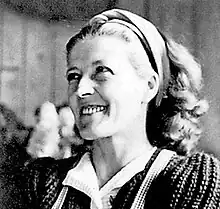 Clara Thalmann (1936)
Clara Thalmann (1936)
Clara Thalmann (née Ensner; 24 September 1908 – 24 January 1987) was a Swiss journalist, athlete and militiawoman, who fought during the Spanish Civil War. (Full article...) Image 20The 2011 season for Euskaltel–Euskadi began in January at the Tour Down Under and ended in October at the Giro di Lombardia. It was the team's eighteenth season as a professional cycling team, and its eleventh with UCI ProTeam – Trade Team 1 between 2001 and 2004 – status. As a UCI ProTeam, they were automatically invited and obligated to send a squad to every event on the UCI World Tour calendar. For the second year in a row, the traditionally all-Basque team added a French rider. This year, it was second-year professional Pierre Cazaux, who rode for FDJ in 2010. (Full article...)
Image 20The 2011 season for Euskaltel–Euskadi began in January at the Tour Down Under and ended in October at the Giro di Lombardia. It was the team's eighteenth season as a professional cycling team, and its eleventh with UCI ProTeam – Trade Team 1 between 2001 and 2004 – status. As a UCI ProTeam, they were automatically invited and obligated to send a squad to every event on the UCI World Tour calendar. For the second year in a row, the traditionally all-Basque team added a French rider. This year, it was second-year professional Pierre Cazaux, who rode for FDJ in 2010. (Full article...) Image 21Obras Son Amores is the third studio album by Spanish singer Antonio Carmona. It was released on March 31, 2017, through Universal Music Latin Entertainment. Carmona spent five years working with different artists on songs for the album. Alex Cuba, Claudia Brant, Juanes, Luis Enrique Mejía, and Alejandro Sanz, are some of the artists he collaborated with. (Full article...)
Image 21Obras Son Amores is the third studio album by Spanish singer Antonio Carmona. It was released on March 31, 2017, through Universal Music Latin Entertainment. Carmona spent five years working with different artists on songs for the album. Alex Cuba, Claudia Brant, Juanes, Luis Enrique Mejía, and Alejandro Sanz, are some of the artists he collaborated with. (Full article...) Image 22
Image 22.png.webp) Journey of Cooke around the Philippines in 1798
Journey of Cooke around the Philippines in 1798
The Raid on Manila of January 1798 was a Royal Navy false flag military operation during the French Revolutionary Wars intended to scout the strength of the defences of Manila, capital of the Spanish Philippines, capture a Manila galleon and assess the condition of the Spanish Navy squadron maintained in the port. Spain had transformed from an ally of Great Britain in the War of the First Coalition into an enemy in 1796. Thus the presence of a powerful Spanish squadron at Manila posed a threat to the China Fleet, an annual convoy of East Indiaman merchant ships from Macau in Qing Dynasty China to Britain, which was of vital economic importance to Britain. So severe was this threat that a major invasion of the Spanish Philippines had been planned from British India during 1797, but had been called off following the Treaty of Campo Formio in Europe and the possibility of a major war in India between the British East India Company and the Kingdom of Mysore. (Full article...) Image 23
Image 23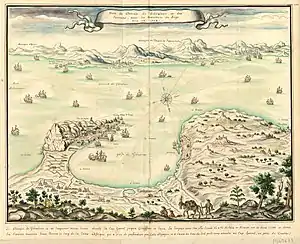 Veüe du d'Estroit de Gibraltar et des Environs, avec les tranchées du Siège mis en 1704, Louis Boudan
Veüe du d'Estroit de Gibraltar et des Environs, avec les tranchées du Siège mis en 1704, Louis Boudan
The twelfth siege of Gibraltar was fought between September 1704 and May 1705 during the War of the Spanish Succession. It followed the capture in August 1704 of the fortified town of Gibraltar, at the southern tip of Spain, by an Anglo–Dutch naval force led by Sir George Rooke and Prince George of Hesse-Darmstadt. The members of the Grand Alliance, the Holy Roman Empire, England, the Netherlands, Pro-Habsburg Spain, Portugal and Savoy, had allied to prevent the unification of the French and Spanish thrones by supporting the claim of the Habsburg pretender Archduke Charles VI of Austria as Charles III of Spain. They were opposed by the rival claimant, the Bourbon Philip, Duke of Anjou, ruling as Philip V of Spain, and his patron and ally, Louis XIV of France. The war began in northern Europe and was largely contained there until 1703, when Portugal joined the confederate powers. From then, English naval attentions were focused on mounting a campaign in the Mediterranean to distract the French navy and disrupt French and Bourbon Spanish shipping or capture a port for use as a naval base. The capture of Gibraltar was the outcome of that initial stage of the Mediterranean campaign. (Full article...) Image 24Jonah ibn Janah (Judeo-Arabic: יוֺנָה אִבְּן גַּ֗נָאח, romanized: Yonāh ibn Janāḥ) or ibn Janach, born Abū al-Walīd Marwān ibn Janāḥ ( Arabic: أبو الوليد مروان بن جناح), (c. 990 – c. 1055), was a Jewish rabbi, physician and Hebrew grammarian active in al-Andalus (Muslim-ruled Spain). Born in Córdoba, ibn Janah was mentored there by Isaac ibn Gikatilla and Isaac ibn Mar Saul, before he moved around 1012, due to the sacking of the city by Berbers. He then settled in Zaragoza, where he wrote Kitab al-Mustalhaq, which expanded on the research of Judah ben David Hayyuj and led to a series of controversial exchanges with Samuel ibn Naghrillah that remained unresolved during their lifetimes. (Full article...)
Image 24Jonah ibn Janah (Judeo-Arabic: יוֺנָה אִבְּן גַּ֗נָאח, romanized: Yonāh ibn Janāḥ) or ibn Janach, born Abū al-Walīd Marwān ibn Janāḥ ( Arabic: أبو الوليد مروان بن جناح), (c. 990 – c. 1055), was a Jewish rabbi, physician and Hebrew grammarian active in al-Andalus (Muslim-ruled Spain). Born in Córdoba, ibn Janah was mentored there by Isaac ibn Gikatilla and Isaac ibn Mar Saul, before he moved around 1012, due to the sacking of the city by Berbers. He then settled in Zaragoza, where he wrote Kitab al-Mustalhaq, which expanded on the research of Judah ben David Hayyuj and led to a series of controversial exchanges with Samuel ibn Naghrillah that remained unresolved during their lifetimes. (Full article...)
General images
.jpg.webp) Image 1Execution of Torrijos and his men in 1831. Ferdinand VII took repressive measures against the liberal forces in his country. (from History of Spain)
Image 1Execution of Torrijos and his men in 1831. Ferdinand VII took repressive measures against the liberal forces in his country. (from History of Spain)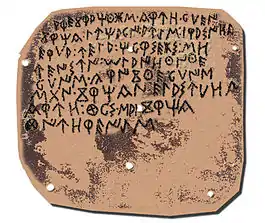 Image 2Illustration depicting the (now lost) Luzaga's Bronze, an example of the Celtiberian script. (from History of Spain)
Image 2Illustration depicting the (now lost) Luzaga's Bronze, an example of the Celtiberian script. (from History of Spain).JPG.webp) Image 3Episode of the 1854 Spanish Revolution in the Puerta del Sol, by Eugenio Lucas Velázquez. (from History of Spain)
Image 3Episode of the 1854 Spanish Revolution in the Puerta del Sol, by Eugenio Lucas Velázquez. (from History of Spain)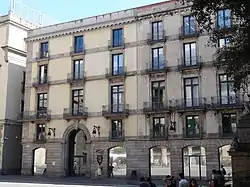

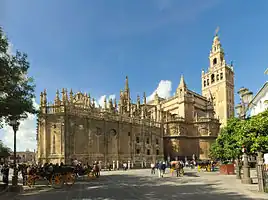
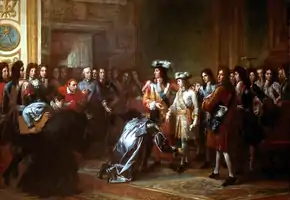 Image 7Recognition of the Duke of Anjou as King of Spain, under the name of Philip V , November 16, 1700 (from History of Spain)
Image 7Recognition of the Duke of Anjou as King of Spain, under the name of Philip V , November 16, 1700 (from History of Spain)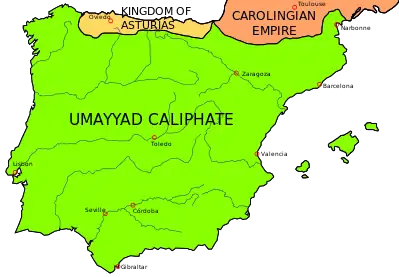
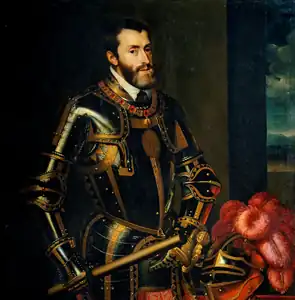 Image 9Charles I of Spain (better known in the English-speaking world as the Holy Roman Emperor Charles V) was the most powerful European monarch of his day. (from History of Spain)
Image 9Charles I of Spain (better known in the English-speaking world as the Holy Roman Emperor Charles V) was the most powerful European monarch of his day. (from History of Spain) Image 10Felipe González signing the treaty of accession to the European Economic Community on 12 June 1985. (from History of Spain)
Image 10Felipe González signing the treaty of accession to the European Economic Community on 12 June 1985. (from History of Spain)
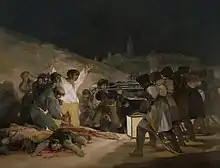
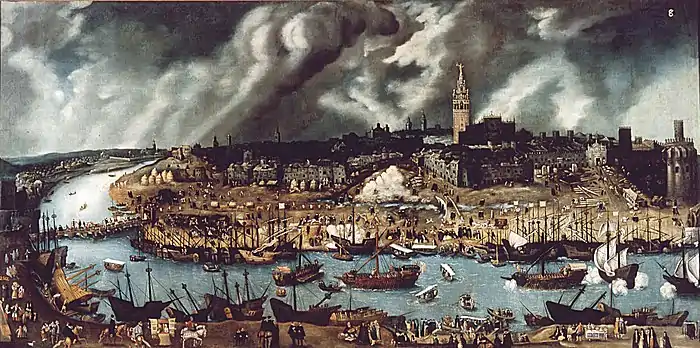 Image 13The Port of Seville in the late 16th century. Seville became one of the most populous and cosmopolitan European cities after the expeditions to the New World. (from History of Spain)
Image 13The Port of Seville in the late 16th century. Seville became one of the most populous and cosmopolitan European cities after the expeditions to the New World. (from History of Spain)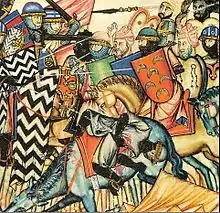
.jpg.webp) Image 15The pro-independence forces delivered a crushing defeat to the royalists and secured the independence of Peru in the 1824 battle of Ayacucho. (from History of Spain)
Image 15The pro-independence forces delivered a crushing defeat to the royalists and secured the independence of Peru in the 1824 battle of Ayacucho. (from History of Spain)![Image 16Detail of the votive crown of Recceswinth from the Treasure of Guarrazar, (Toledo-Spain) hanging in Madrid. The hanging letters spell [R]ECCESVINTHVS REX OFFERET [King R. offers this]. (from History of Spain)](../I/Corona_de_(29049230050).jpg.webp) Image 16Detail of the votive crown of Recceswinth from the Treasure of Guarrazar, (Toledo-Spain) hanging in Madrid. The hanging letters spell [R]ECCESVINTHVS REX OFFERET [King R. offers this]. (from History of Spain)
Image 16Detail of the votive crown of Recceswinth from the Treasure of Guarrazar, (Toledo-Spain) hanging in Madrid. The hanging letters spell [R]ECCESVINTHVS REX OFFERET [King R. offers this]. (from History of Spain)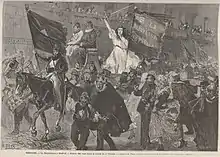 Image 17Proclamation of the Spanish Republic in Madrid (from History of Spain)
Image 17Proclamation of the Spanish Republic in Madrid (from History of Spain)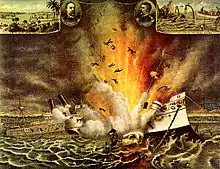 Image 18The explosion of the USS Maine launched the Spanish–American War in April 1898 (from History of Spain)
Image 18The explosion of the USS Maine launched the Spanish–American War in April 1898 (from History of Spain) Image 19The Iberian Peninsula in the 3rd century BC (from History of Spain)
Image 19The Iberian Peninsula in the 3rd century BC (from History of Spain)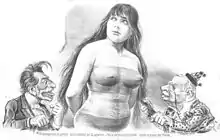 Image 201894 satirical cartoon depicting the tacit accord for seamless government change (turnismo) between the leaders of two dynastic parties (Sagasta and Cánovas del Castillo), with the country being lied in an allegorical fashion. (from History of Spain)
Image 201894 satirical cartoon depicting the tacit accord for seamless government change (turnismo) between the leaders of two dynastic parties (Sagasta and Cánovas del Castillo), with the country being lied in an allegorical fashion. (from History of Spain)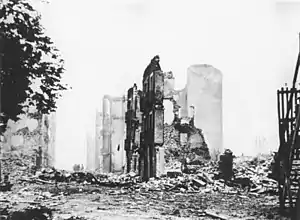
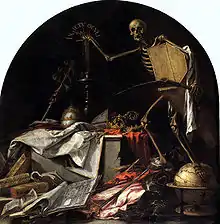 Image 22In ictu oculi ("In the blink of an eye"), a vanitas by Juan de Valdés Leal (from Spanish Golden Age)
Image 22In ictu oculi ("In the blink of an eye"), a vanitas by Juan de Valdés Leal (from Spanish Golden Age)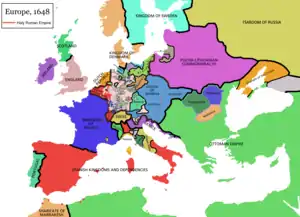
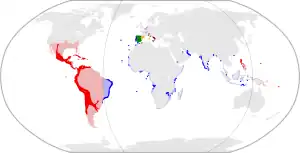
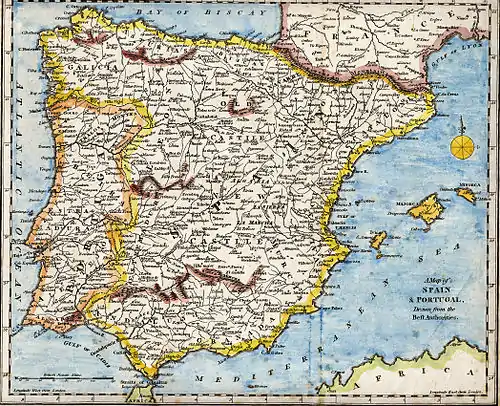
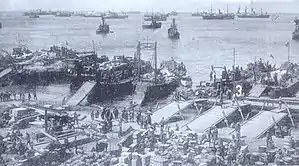 Image 26The successful 1925 Alhucemas landing turned the luck in the Rif War towards Spain's favour. (from History of Spain)
Image 26The successful 1925 Alhucemas landing turned the luck in the Rif War towards Spain's favour. (from History of Spain)
_en_Prins_Juan_Carlos%252C_Bestanddeelnr_254-9762.jpg.webp) Image 28Francisco Franco and his appointed successor Prince Juan Carlos de Borbón. (from History of Spain)
Image 28Francisco Franco and his appointed successor Prince Juan Carlos de Borbón. (from History of Spain)
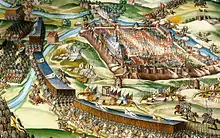
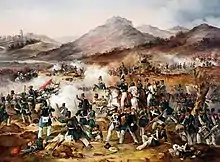
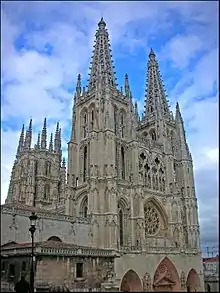
 Image 33Visigothic church, San Pedro de la Nave. Zamora. Spain (from History of Spain)
Image 33Visigothic church, San Pedro de la Nave. Zamora. Spain (from History of Spain)
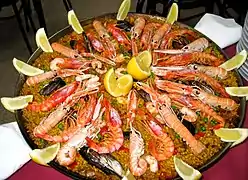
 Image 36The greatest extent of the Visigothic Kingdom of Toulouse, c. 500, showing Territory lost after Vouillé in light orange (from History of Spain)
Image 36The greatest extent of the Visigothic Kingdom of Toulouse, c. 500, showing Territory lost after Vouillé in light orange (from History of Spain)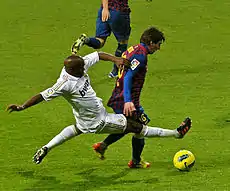
 Image 38The Christian kingdoms of Hispania and the Islamic Almohad empire c. 1210
Image 38The Christian kingdoms of Hispania and the Islamic Almohad empire c. 1210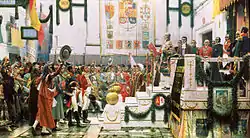 Image 39The promulgation of the Constitution of 1812, oil painting by Salvador Viniegra. (from History of Spain)
Image 39The promulgation of the Constitution of 1812, oil painting by Salvador Viniegra. (from History of Spain)_-_Fondo_Car-Kutxa_Fototeka.jpg.webp)
.jpg.webp) Image 41Visigothic King Roderic haranguing his troops before the Battle of Guadalete (from History of Spain)
Image 41Visigothic King Roderic haranguing his troops before the Battle of Guadalete (from History of Spain) Image 42Louis XIV of France and Philip IV of Spain at the Meeting on the Isle of Pheasants in June 1660, part of the process to put an end to the Franco-Spanish War (1635–59). (from History of Spain)
Image 42Louis XIV of France and Philip IV of Spain at the Meeting on the Isle of Pheasants in June 1660, part of the process to put an end to the Franco-Spanish War (1635–59). (from History of Spain)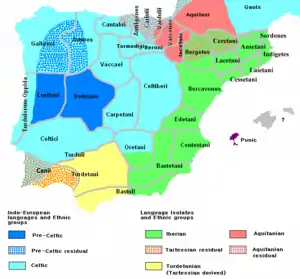 Image 43Ethnology of the Iberian Peninsula c. 200 BC (from History of Spain)
Image 43Ethnology of the Iberian Peninsula c. 200 BC (from History of Spain)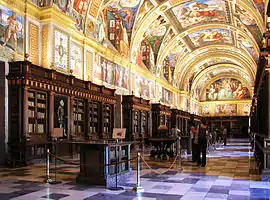
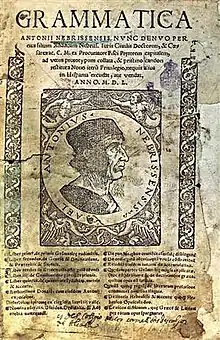 Image 45The title page of the Gramática de la lengua castellana (1492), the first grammar of a modern European language to be published. (from History of Spain)
Image 45The title page of the Gramática de la lengua castellana (1492), the first grammar of a modern European language to be published. (from History of Spain).jpg.webp) Image 46El paseo de las Delicias, a 1784–1785 painting by Ramón Bayeu depicting a meeting of members of the aristocracy in the aforementioned location. (from History of Spain)
Image 46El paseo de las Delicias, a 1784–1785 painting by Ramón Bayeu depicting a meeting of members of the aristocracy in the aforementioned location. (from History of Spain)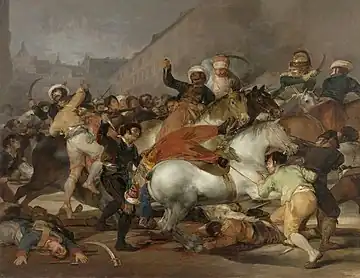 Image 47The Second of May 1808 was the beginning of the popular Spanish resistance against Napoleon. (from History of Spain)
Image 47The Second of May 1808 was the beginning of the popular Spanish resistance against Napoleon. (from History of Spain)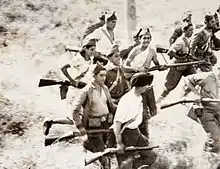 Image 48People's militias attacking on a Rebel position in Somosierra in the early stages of the war. (from History of Spain)
Image 48People's militias attacking on a Rebel position in Somosierra in the early stages of the war. (from History of Spain).jpg.webp) Image 49Members of the provisional government after the 1868 Glorious Revolution, by Jean Laurent. (from History of Spain)
Image 49Members of the provisional government after the 1868 Glorious Revolution, by Jean Laurent. (from History of Spain)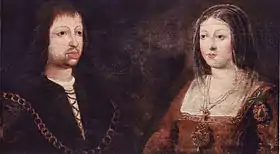 Image 50Wedding portrait of the Catholic Monarchs (from History of Spain)
Image 50Wedding portrait of the Catholic Monarchs (from History of Spain)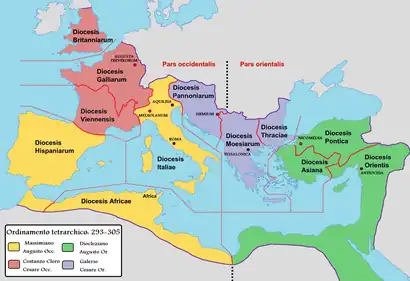
.jpg.webp)
.jpg.webp) Image 53Christopher Columbus leads expedition to the New World, 1492, sponsored by Spanish crown (from History of Spain)
Image 53Christopher Columbus leads expedition to the New World, 1492, sponsored by Spanish crown (from History of Spain)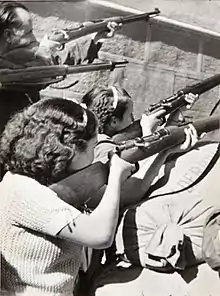 Image 54Two women and a man during the siege of the Alcázar (from History of Spain)
Image 54Two women and a man during the siege of the Alcázar (from History of Spain)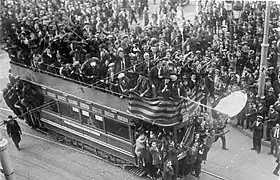 Image 55Celebrations of the proclamation of the 2nd Republic in Barcelona. (from History of Spain)
Image 55Celebrations of the proclamation of the 2nd Republic in Barcelona. (from History of Spain)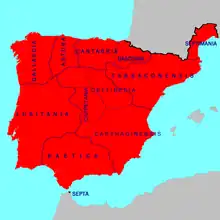 Image 56Visigothic Hispania and its regional divisions in 700, prior to the Muslim conquest (from History of Spain)
Image 56Visigothic Hispania and its regional divisions in 700, prior to the Muslim conquest (from History of Spain)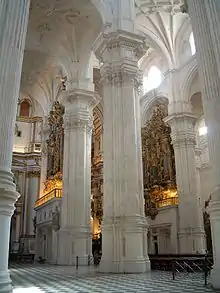
.svg.png.webp) Image 58Map of territories that were once part of the Spanish Empire (from History of Spain)
Image 58Map of territories that were once part of the Spanish Empire (from History of Spain)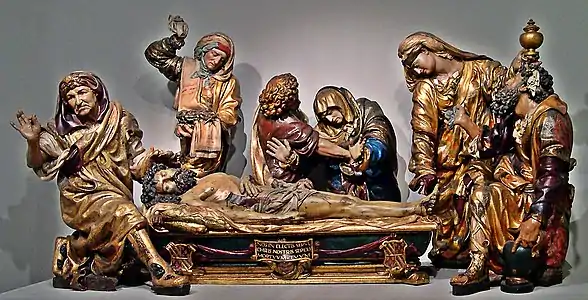
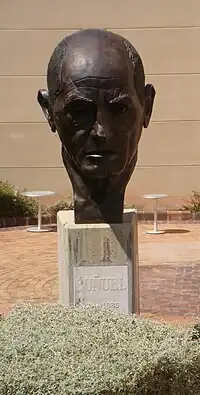 Image 60Cabeza de Luis Buñuel, sculptor's work by Iñaki, in the center Buñuel Calanda. (from Culture of Spain)
Image 60Cabeza de Luis Buñuel, sculptor's work by Iñaki, in the center Buñuel Calanda. (from Culture of Spain) Image 61Las Meninas (1656, English: The Maids of Honour) by Diego Velázquez (from Spanish Golden Age)
Image 61Las Meninas (1656, English: The Maids of Honour) by Diego Velázquez (from Spanish Golden Age)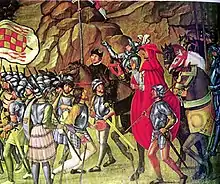
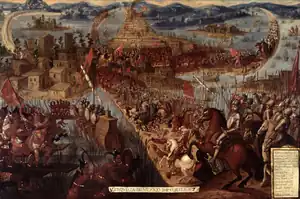 Image 63The Conquest of Tenochtitlán (from History of Spain)
Image 63The Conquest of Tenochtitlán (from History of Spain)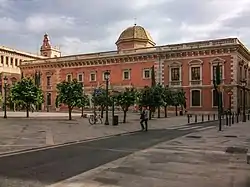
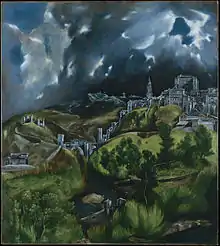

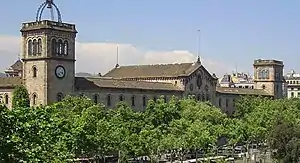
In the news
- 30 November 2023 – 2023 Israel–Hamas war
- Spanish Prime Minister Pedro Sánchez has expressed doubts that Israel is abiding by international law in the war, due to the high number of civilian casualties and video footage of growing numbers of children dying. (Al Jazeera)
- 25 November 2023 – 2023 Israel–Hamas war
- The Israeli government will summon the Belgian and Spanish ambassadors following their criticism of Israel for the suffering of Palestinian civilians under Israeli military operations in the Gaza Strip by Belgian Prime Minister Alexander De Croo and Spanish Prime Minister Pedro Sánchez. (AP)
- 16 November 2023 – 2023 Spanish government formation
- Pedro Sánchez is re-elected as prime minister of Spain, forming his third government. (The Guardian)
No recent news
Spain topics
| History |
| ||||||
|---|---|---|---|---|---|---|---|
| Geography | |||||||
| Politics | |||||||
| Economy | |||||||
| Society |
| ||||||
Categories
WikiProjects
- Main project
WikiProject Spain
- Related projects
WikiProject Basque • WikiProject Catalan-speaking Countries • WikiProject Galicia • Spanish Translation of the Week
Things you can do

- Add {{WikiProject Spain}} to article talk pages which have some relation to Spain
- Help write new Spain-related articles and improve and expand existent ones
- Assess: unassessed Spain-related articles
- Suggest: selected articles, biographies, pictures, did you knows? and quotes for this Portal
Related portals
Associated Wikimedia
The following Wikimedia Foundation sister projects provide more on this subject:
-
 Commons
Commons
Free media repository -
 Wikibooks
Wikibooks
Free textbooks and manuals -
 Wikidata
Wikidata
Free knowledge base -
 Wikinews
Wikinews
Free-content news -
 Wikiquote
Wikiquote
Collection of quotations -
 Wikisource
Wikisource
Free-content library -
 Wikiversity
Wikiversity
Free learning tools -
 Wikivoyage
Wikivoyage
Free travel guide -
 Wiktionary
Wiktionary
Dictionary and thesaurus
-
 List of all portalsList of all portals
List of all portalsList of all portals -
 The arts portal
The arts portal -
 Biography portal
Biography portal -
 Current events portal
Current events portal -
 Geography portal
Geography portal -
 History portal
History portal -
 Mathematics portal
Mathematics portal -
 Science portal
Science portal -
 Society portal
Society portal -
 Technology portal
Technology portal -
 Random portalRandom portal
Random portalRandom portal -
 WikiProject PortalsWikiProject Portals
WikiProject PortalsWikiProject Portals
- ↑ "Atlantic hurricane best track (HURDAT version 2)" (Database). United States National Hurricane Center. April 5, 2023. Retrieved December 3, 2023.
 This article incorporates text from this source, which is in the public domain.
This article incorporates text from this source, which is in the public domain.

